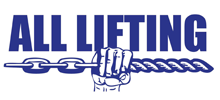
ALL YOU NEED TO KNOW ABOUT SPREADER BARS FOR YOUR LIFTING PROJECT
If you're involved in a construction, rigging or mining project, chances are you've heard of a spreader bar and how it can help with lifting heavy loads. But what does this mean for your specific job? In this blog post, we'll dive into the details of spreader bars – from how to use them safely onsite to what materials are best for different jobs – and show why they should become an essential part of any lifting project. If you want to know the ins and outs about how to make the most out of your lift, and keep your crew safe in the process, read on!
What is a spreader bar?
A spreader bar is a piece of equipment that is used to distribute weight evenly when lifting heavy objects. Spreader bars are typically made from steel and can be either fixed or adjustable. Fixed spreader bars are typically used for lifting smaller objects, while adjustable spreader bars also called combination lifting beams are better suited for larger objects. Imagine a superhero with arms that stretch to incredible lengths, lifting heavy objects with ease and grace. That's exactly what spreader bars do! These great devices help to distribute weight evenly along their arms, preventing any bending or snapping under pressure. Plus, they keep things stable and steady while being lifted, making them a breeze to control. Talk about a heavy-lifting hero!
How do spreader bars work?
Spreader bars work by distributing the weight of the object being lifted evenly across the length of the bar. This helps to prevent the bar from bending or breaking under the weight of the object. Additionally, spreader bars help to prevent the object from shifting during the lifting process, which can make it easier to control the object being lifted.
What are some common uses for spreader bars?
Spreader bars are commonly used in a variety of industries, including construction, engineering, and manufacturing, among others. They are often used to lift heavy objects, such as beams, pipes, and sheets of metal. Spreader bars can also be used to lift lighter objects, such as boxes and crates.
What are some safety tips for using spreader bars?
Always use a bar that is rated for the weight of the object being lifted. Also, inspecting the bar before each use, and never using a damaged or defective bar, will ensure site safety. Finally, it is important to make sure that the object being lifted is securely attached to the bar before beginning the lifting process. You should take due care when using spreader bars and ensure any components like chains, hooks or fittings are in good condition before use. Faulty spreader bar components could lead to dangerous lifting operations
To conclude, it is clear that understanding spreader bars and their use can go a long way in ensuring your lifting projects are successful. They are a multi-purpose, safe and effective tool, enabling you to move even the biggest of loads with excellent accuracy and precision. If you are ever unsure or uncomfortable with the use of any equipment related to lifting activities, then you should seek out qualified help. At All Lifting, we provide full customer support with our range of spreader bars. Whether it's helping calculate the dimensions for your application or simply advising on how to use your gear safely, we're here to help you, always. For any further assistance, feel free to contact us at All Lifting on 1300 666 733 and one of our experts will be happy to provide advice tailored specifically for your next project.


